Ōtamarākau Ventures Limited Partnership
Ōtamarākau Ventures Limited Partnership (OVLP) is a Māori owned joint venture between Ōtamarākau Farm Trust (50 percent), and Ngāti Mākino Assets Limited
(50 percent).
Video
Download this story
Download a copy of the Kirikiri dairy story here [PDF, 465 KB]
The farm is located on State Highway 2 at Ōtamarākau, south of Tauranga on the East Coast of
the North Island. The total land area is 147.44 ha with one third flat, one third rolling and one third steep. The mean annual rainfall in the area is 1,299 mm.
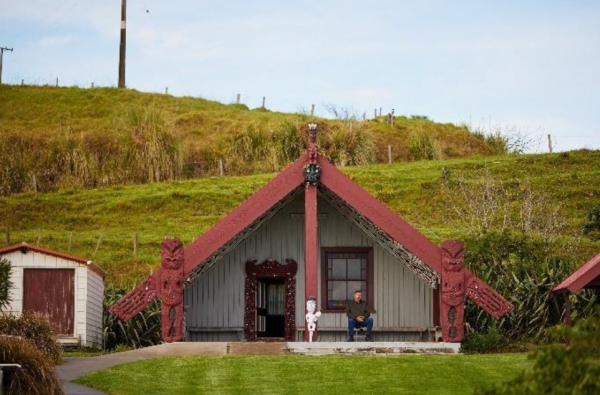
OVLP was established in 2021 following an opportunity for the landowner, Ōtamarākau Farm
Trust, to bring in external capital enabling high quality horticulture land to be developed. Essentially, Ōtamarākau Farm Trust provides the land and Ngāti Mākino Assets Limited provides the capital to the venture. The first item on the agenda for OVLP was the conversion of 16 hectares known as the Manoeka block, into kiwifruit. The existing dairy farm was reduced to 100 effective hectares to accommodate this conversion. Currently in the early stages, the full conversion is expected to be fully implemented in 2029.
The dairy farm is currently managed in three blocks, an effluent block, a freshwater irrigation block and an unirrigated block. There are three main soil types on the property, well drained allophanic, pumice and poorly drained gley soils.
The recently developed kiwifruit orchard consists of a 6.41 ha Gold block and a 5.67 ha Hayward (Green) block. In the centre of the orchard is a 7,500 m 3 water storage pond which allows for water to be taken for frost protection and summer irrigation at a low extraction rate from the river.
The farm operates a zero-pasture damage policy grazing 30 percent of the cows off farm during the winter and grazing the remainder on drier parts of the farm. On the steeper sidelings cows are not intensively grazed during the winter period to minimise erosion on these areas. Chicory is grown for summer feed and rotated around the farm as part of the farm’s pasture renovation programme. In addition to the dairy and kiwifruit areas, the farm has 14 ha of riparian planting
and biodiversity areas.
Table 1: Ōtamarākau Ventures Limited Partnership land areas (ha)
|
Physical parameters |
2020 | 2029 |
|
Effective ha |
128.6 | 112.0 |
|
Peak Cows |
348 | 329 |
|
Production milk solids/cow |
323 | 345 |
|
Summer Crop (ha) |
16.7 | 12.0 |
|
Kiwifruit canopy (ha) |
0 | 16.0 |
|
Total RSU |
3,328 | 3,132 |
What changes have been made?
Ōtamarākau Ventures Limited Partnership have undertaken some changes on farm that have largely been driven by kaitiakitanga and stewarding the land. The changes that have resulted in greenhouse gas reductions are:
- converting 16 ha of the dairy platform to kiwifruit in 2021/2022
- reducing stocking rate by 30 cows while maintaining milk production targets.
Other on-farm system changes that have been made that have contributed to a greater environmental performance are:
-
implementation of a soil moisture monitor to improve water use efficiency of irrigation and improve timing of irrigation scheduling
-
reduction of sprinkler application for effluent and freshwater
-
retirement and planting of waterways
-
new effluent system including a lined storage pond
-
water metering on all water takes.
Why were the changes made?
OVLP have one main objective that largely guides how they operate both in the day-to-day operations and for any long-term strategic planning. This objective is to optimise profitability and opportunity for the owners, while ensuring the whenua is protected and enhanced both environmentally and culturally.
GHG modelling method
The farm was modelled in OverseerFM.
What have been the impacts of the changes?
For OVLP, the changes in their farming system have enabled the establishment of diversified income streams. The joint venture has enabled the local iwi access to both land and funds. These changes have enabled OVLP to steward the land in a way that cares for the whenua while reducing the environmental footprint of their system.
Overlooking the sea is the Ōtamarākau marae “Waitaha-A-Hei,” named after a tupuna (ancestor)
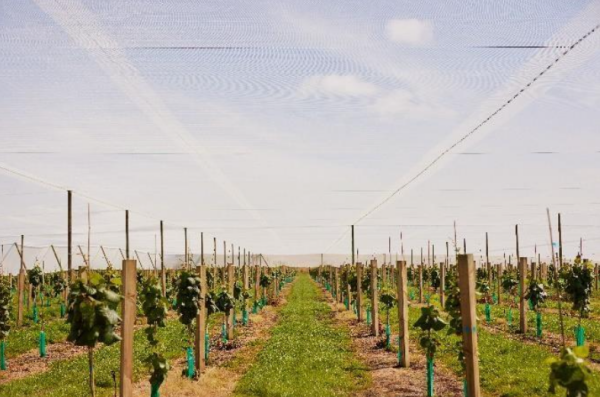
Tuhei-o-te-Rangi. The marae has partnered with Kiwifruit Country Tours to offer a Māori tourism
venture. The marae venture was already established prior to the joint venture, however as another means of diversification for the landowners, the marae venture has enabled Ōtamarākau Farm Trust to incorporate Mātauranga Māori into how they operate the whenua.
Figure 1: Total biological emissions (methane and nitrous oxide) across the whole farm on a per ha/yr basis (t CO₂e/ha)
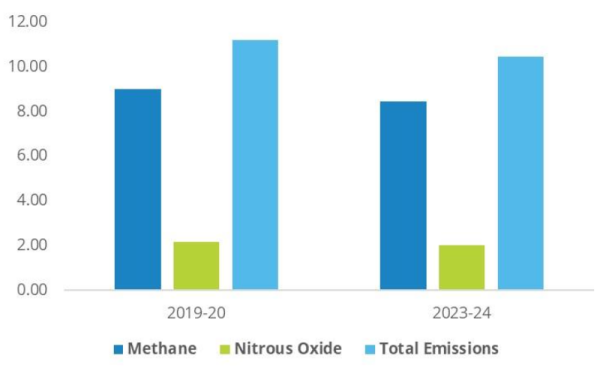
Figure 1 above shows a 5percent reduction in total biological emissions from 2019/20 to 2028/29. Below in Figure 2, the breakdown of greenhouse gas emissions – methane, nitrous oxide and carbon dioxide is compared.
Figure 2: Total greenhouse gas emissions (t CO₂e/ha) from OVLP in 2019/20 compared to what is projected in 2028/29.
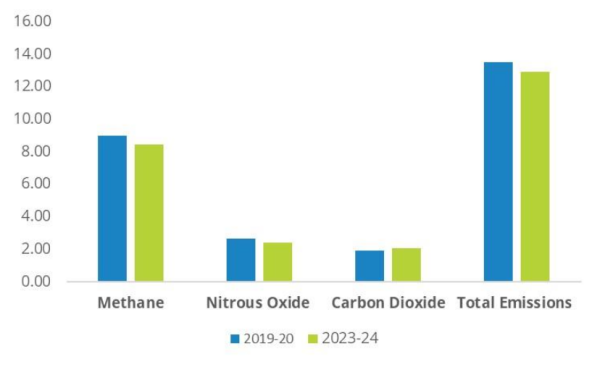
The changes in farm system have resulted in a decrease in total biological greenhouse gas emissions of 8percent, largely driven by the conversion of land from dairy to kiwifruit.
With their consistent recording of farm data and farm systems changes, OVLP are well positioned to meet changing environmental legislation.
One of the key goals of OVLP is to develop the land into the best land use for the environment. In 2022, Ōtamarākau Farm Trust worked with advisors to undertake a land use analysis to explore options for the land. Kiwifruit was identified as a suitable land use change, though the Trust did not have access to the funding required. Advisors facilitated the establishment of a joint venture, enabling the conversion of 16 ha of the original dairy platform to horticulture. The emissions profile presented below shows a system outlook to 2029, which is when the proposed system will be fully implemented.
What other changes are planned?
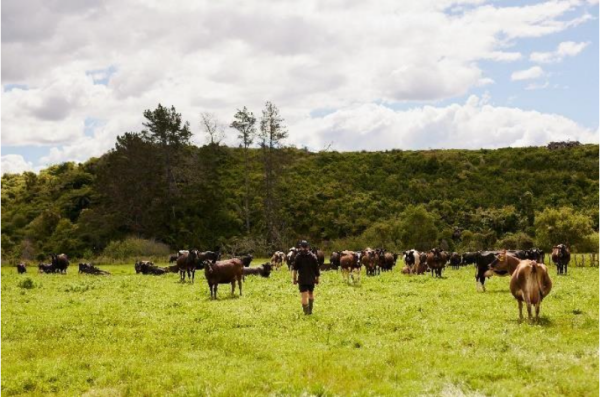
Given OVLP are in the beginning stages of a multi-year conversion to horticulture there are no further changes planned for the joint venture. With the environment at the heart of their system operation, OVLP will continue to keep an eye on their environmental footprint and opportunities to reduce their impact on the whenua.
Table 2: OVLP farm emissions from OverseerFM
|
OVLP farm |
2020 | 2029 | % Change |
|
Total area (ha) |
145.5 | 145.5 | |
|
Total Methane (t CO₂e/ha/yr) |
6.78 | 6.36 | -6% |
|
Total Nitrous oxide (t CO₂e/ha/yr) |
2.28 | 1.84 | -19% |
|
Total CO₂e (t/ha) |
1.77 | 2.09 | 18% |
| Total GHG (t CO₂e/ha/yr) | 10.83 | 10.29 | -5% |
| Biological Methane (t CO₂e/ha/yr) | 6.78 | 6.36 | -6% |
|
Biological Nitrous oxide (t CO₂e/ha/yr) |
1.8 | 1.8 | 0% |
|
Total biological GHGs (t CO₂e/ha/yr) |
8.58 | 8.16 | -5% |
|
Total Methane (kg CH₄/ha) |
271 | 254 | -6% |
|
Nitrogen leached (kg N/ha/yr) |
64.5 | 37.5 | -42% |
What drives or constrains these changes?
Ōtamarākau Ventures Limited Partnership (OVLP) farm with the whenua at the heart of their operation on the East Coast of Aotearoa. Kaitiakitanga guides the decision making of the joint
venture to ensure they provide for their hapū and generations to come. Knowing their environmental footprint and developing their land into the best use is important to OVLP, and a key driver of the changes made.
What advice do they have for other farmers?
OVLP encourage other farmers to consider opportunities to share knowledge, resources, and
expertise. By working together, you can effectively address challenges, optimise resources, mitigate risks, and build a stronger, more resilient community.
Getting off farm and doing something you enjoy with the farming staff or going for a fish or a walk. It’s important to do so to ensure you continue to enjoy the mahi together.
Published: July 22, 2025

